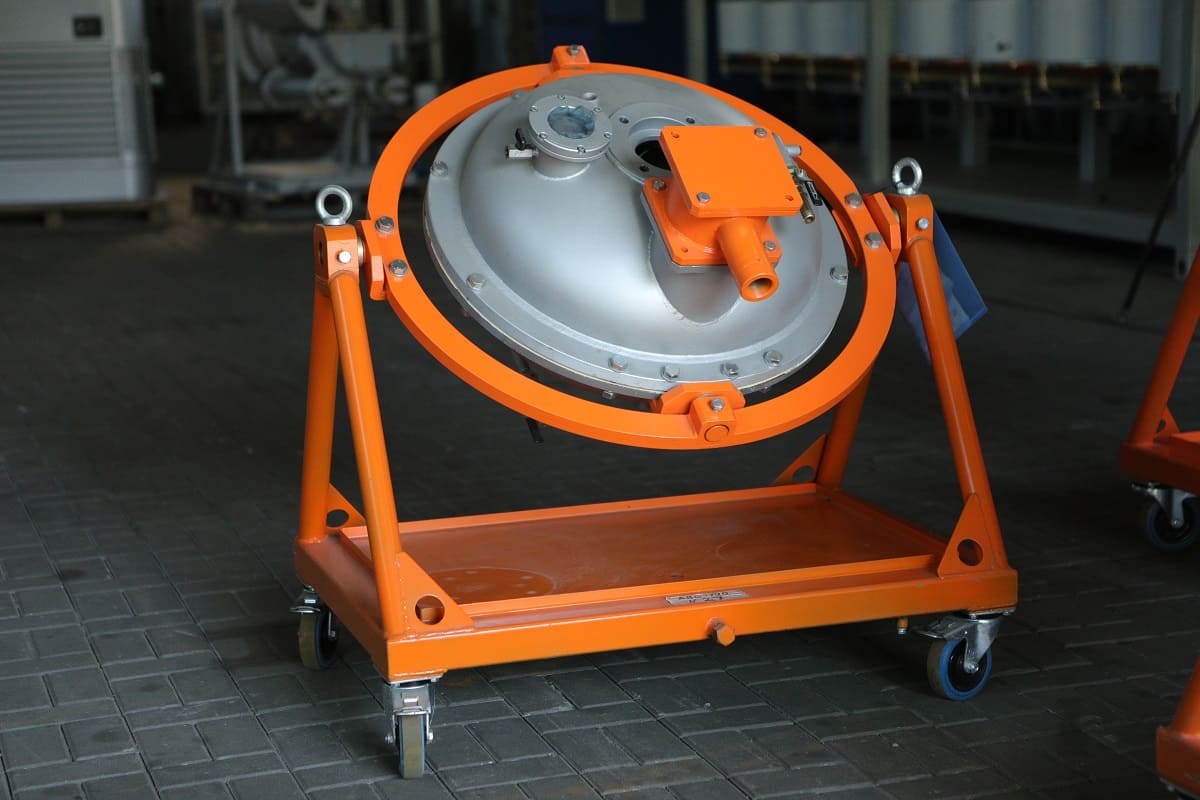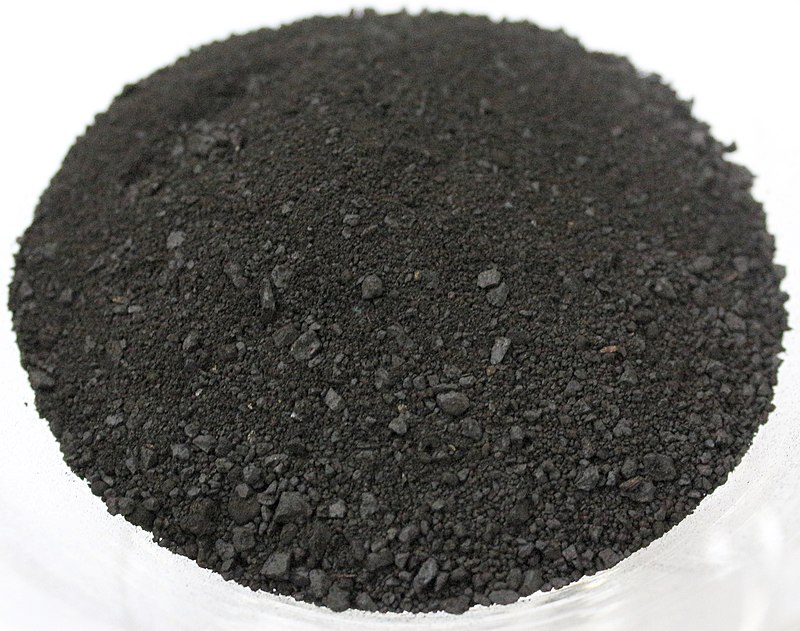Leonardite is a subtype of brown coal. It is an organic product consisting of substances useful for plants and living organisms. The basic components here are humic and fulvic acids. They are formed from plant and animal tissues by exposure to chemical and biological processes resulting in humus formation. Leonardite grinding allows obtaining highly concentrated organic fertilizers which are an alternative to chemical products.
Compared to other humic substances, leonardite is distinguished by a high biological activity in the molecular structure which is associated with a large molecular weight of humic acids obtained from this substance.
Leonardite application
Leonardite is a substance in which essential high-molecular-weight organic components are concentrated and contribute to improvement of soil microflora and stimulation of microorganisms’ activity in soil. Humic substances saturate plants with useful components, affect their growth, development, germination ability, and immunity. They reduce the amount of pesticides and heavy metals in soil. Humic acids have a detoxifying effect on substrates. In addition, humic preparations increase the assimilability of useful substances in living organisms.
Owing to such properties of leonardite products, they are used in the following fields:
- Soil fertilization
Replenishment of useful substances stock in humus, restoration of microflora, normalization of soil acidity and ability to retain moisture.
- Plant dressing
Owing to humic acids, plants receive substances for active growth, development, resistance to diseases, pests, drought, and cold. They grow faster, produce high-quality crops, and extend the shelf life of fruit and vegetables.
- Seed processing
Increasing the resistance to adverse weather conditions, strengthening and activating the ability to germinate.
- Substrate detoxification
Neutralization of pesticides, radionuclides, heavy metals, reduction of soil toxicity.
- Supplementary feeding of animals, poultry, and fish
It is a biologically active supplement in livestock, fish, and poultry farming which contributes to increasing the nutritional capacity of feedstuff, assimilation of useful elements and substances by living organisms.
In addition, leonardite is used for production of fuel briquettes. It is also used in the field of water treatment when drilling the oil wells.
In order to obtain a high-quality product used in these fields, it is important to activate the substance properly and efficiently. Leonardite grinding, obtaining humic substances by chemical extraction, and other processing methods shall ensure a high yield of the product with minimum impact on its organic structure. It shall be environmentally safe.
Conventional methods for leonardite processing
The most common methods for obtaining humic preparations from leonardite involve chemical extraction by leaching. At the same time, a variety of technologies make it possible to obtain ballast and ballastless products. The former are considered to be fertilizers, and the latter are considered to be humic preparations. Fertilizers are distinguished by a considerable remediating effect on soils, they activate the mobility of phosphorus compounds, improve the substrate structure, the hydrophysical properties, etc. The preparations are mainly used for foliar dressing and seed processing, because they have no significant effect on soil properties.
In general, a great number of methods for leonardite processing are practiced in order to obtain fertilizers and preparations:
- leonardite grinding;
- oxidation using chemical agents;
- leaching technology;
- acidic precipitation;
- electrochemical processing;
- raw stuff settling;
- centrifugation and filtration;
- thickening, drying, and evaporation.
This diversity is determined by the need to obtain products with different properties to be used for various purposes. Each of the technologies is mainly used for production of a specific type of fertilizers or preparations — suspension gels, fulvic acids, humic biologically active preparations. The listed leonardite processing technologies are combined for manufacturing certain products. For example, a popular method for manufacturing humic products involves initial raw stuff grinding, further oxidation, leaching, and other processes.
Basically, the listed technologies are distinguished by their complexity, duration of operations, and costliness due to high energy consumption and the use of chemical agents. In addition, it is not always possible to obtain a sufficiently high yield of the product, or it is partially subjected to alteration because of using the chemical agents, temperatures, and pressure.
The disadvantages of conventional technologies can be evaded owing to a versatile solution in the form of GlobeCore vortex layer device (AVS). Using the unit, it is possible to produce organomineral, organic fertilizers, humic preparations by mechanical activation of raw stuff. In this case, it is not necessary to resort to oxidation or leaching technologies. Leonardite grinding in AVS can be carried out in dry and moist media. Thus, the solution is a versatile, simple, and economically advantageous technology. At the outlet, we obtain a large amount of pure product that is not subjected to chemical processing.
Technology for leonardite grinding by means of a vortex layer device

Leonardite grinding by means of a vortex layer device involves processing the product in an electromagnetic field with the participation of ferromagnetic needles. They act as diminutive mills and mixers. The raw stuff and ferromagnetic particles are put into a non-magnetic chamber. The latter is placed in the inductor space. When the device is turned on, a rotating electromagnetic field is created in the chamber and sets the processed raw stuff and ferromagnetic particles in motion.
The needles actively move through the chamber, collide with its walls, with one another, and with particles of processed product, as well as rotate — a vortex layer is generated. In this medium, intensification of dispersion and mixing processes is observed which is accompanied by release of humic acids from leonardite. It is also facilitated by high local pressures, electromagnetic processing, electrolysis, and acoustic vibrations.
In this medium, active leonardite grinding to a finely dispersed state is observed in which it is possible to release useful substances and make them available to plants and living organisms. The product is ground to a fraction of several micrometers in a matter of minutes without using chemical agents. This technology allows optimizing the production of humic preparations and fertilizers with the energy intensity of technological processes minimized, the use of chemical agents reduced or even eliminated, and the output of substances accelerated several times.
Advantages of a vortex layer device in leonardite grinding
AVS is advantageous and efficient equipment for optimization of leonardite processing due to the following benefits:
- Cost-effectiveness
The energy consumption of AVS-100 and AVS-150 models from GlobeCore is 4.5 and 9.5 kW respectively. Furthermore, the use of chemical agents is minimized, the consumption of water, electricity, and other resources, including time, is reduced while producing the preparations and fertilizers. The technological line is simplified.
- High efficacy
Depending on the model, the grinding degree, the raw stuff processing technology, and other factors, AVS makes it possible to obtain up to 15 cubic meters of product per hour. Furthermore, a fertilizer is produced with a high concentration of humic acids and other useful organic, mineral substances, trace elements. They become available and water-soluble.
- Ease of use
The equipment can be easily integrated into the existing production line. It is distinguished by compactness, intuitive control, low weight — 500 kg. It requires making no pedestal or installing no additional mounting structures.
- Versatility
It can perform dry and wet grinding. Suitable for production of fertilizers and humic preparations of various types to ensure dressing of certain plants and fertilization of soils, as well as of biologically active supplements for the livestock farming sector.
GlobeCore vortex layer device can be used both at a large-scale enterprise and in a compact workshop. Using the device, it will be possible to improve and optimize the existing line for production of humic fertilizers and preparations or to create a new one which will be distinguished by simplicity and ease. For ordering the equipment or getting advice, please contact GlobeCore sales representatives.

